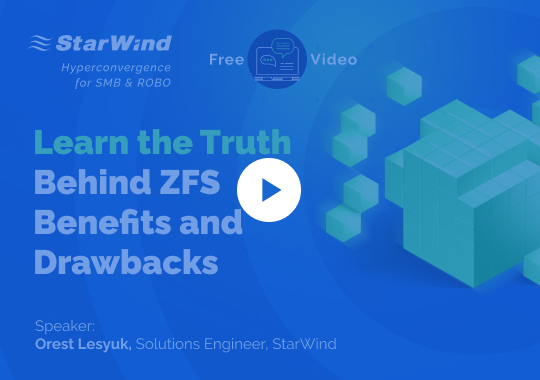Webinar recording: The Truth About ZFS
Published: October 28, 2021
The second episode in the StarWind webinar series on ZFS. This time, we talk about why ZFS is great and what concerns to look out for. We also explain why the industry-standard hypervisors, like Hyper-V and vSphere, did not adopt ZFS. The video concludes with ways to deliver ZFS and a showcase of deploying ZFS on Ubuntu.







